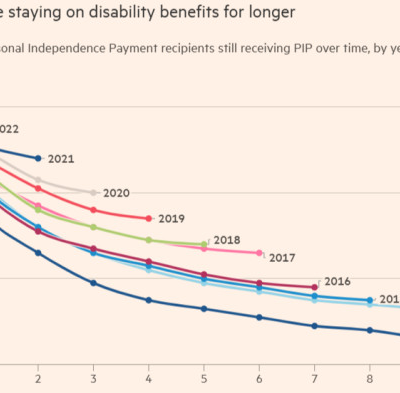This article is a sponsored feature from Mining.com.au partner Clean Air Metals. It is not financial advice. Talk to a registered financial expert before making investment decisions.
As the world looks to diversify its mix of clean energy technologies in a rapid race to reach net zero emissions by 2050, new drivers for the demand of platinum group metals (PGMs) are emerging.
PGMs are currently mainly used in the catalytic converters of internal combustion engine vehicles, which consume over 70% of supply. The group comprises six white-silver coloured metals including platinum, palladium, rhodium, iridium, ruthenium and osmium.
The International Energy Agency (IEA) says reaching net zero emissions targets will require a rapid transformation of energy systems, including the deployment of innovative technologies that can address the most challenging sectors and tackle residual emissions.
Under the IEA’s Net Zero Emissions by 2050 Scenario, low-emissions hydrogen, sustainable aviation fuels, and direct air capture and storage need to grow substantially in the coming years.
Mission critical
But while demand climbs, supply is not gaining at the same rate, meaning projects like Clean Air Metals’ (TSX-V:AIR) Thunder Bay North Critical Minerals Project in Ontario are going to be critical to supply.
Hydrogen will be a large consumer of PGMs, requiring platinum in green hydrogen production and use, and platinum and palladium in liquid organic hydrogen carriers, a major breakthrough in hydrogen transportation.


There is not a great deal of primary production outside of South Africa, which in 2022 accounted for 220,000kg, or 7.1 million troy ounces, of the just under 400,000kg, or 12.9 million troy ounces, of platinum and palladium produced.
Only 6 million ounces of platinum is mined each year and 75% of that comes from South Africa. Recycling also accounts for a notable portion of the global supply of PGMs.
An estimated 17.4 million troy ounces of PGMs were supplied globally in 2022, 72% of which was from mined sources, and the balance was from recycling and scrap sources.
Canada is a significant global producer, ranking third in palladium production and fourth in platinum production.
Meanwhile, Russia, Zimbabwe, and the US make up the remaining top platinum and palladium producing countries.
According to Natural Resources Canada, the country has one primary producing PGM mine in western Ontario near Thunder Bay, with the rest of the country’s supply coming from byproducts of nickel mining.
There are three advanced exploration projects in northern Ontario that are focused on PGMs as the primary commodities.
Clean Air’s Thunder Bay North Project hosts an indicated resource of 14 million tonnes containing 1.2 million ounces of platinum and palladium, along with 56,800 tonnes of copper and 33,800 tonnes of nickel.
Platinum and palladium make up just shy of 50% of the metals in the Thunder Bay Project, with copper accounting for 31% and nickel accounting for 16%.


Supply at odds with demand
Analysts predict a continued platinum deficit, with lower primary supply coming from South African mines as demand continues to rise.
London-based chemicals and sustainable technology company Johnson Matthey says platinum consumption in industrial applications has been stable at 2.8–2.9 million ounces over the last four years, and there is little sign of demand waning.
The company notes in its May 2024 PGM market report that growth in energy transition applications —iincluding sustainable fuels, polymer electrolyte membrane electrolysis and fuel cells — should more than offset declining use in conventional petroleum refining.
“Ruthenium and iridium are also poised to benefit from greater demand in a range of electrochemical processes that are crucial to increased electrification and the hydrogen economy,” Johnson Matthey says.
“Despite ongoing weakness in the world economy, global demand for PGM in industrial applications is forecast to remain robust in 2024, rising 2% to nearly 5.8 million ounces.”
Johnson Matthey also anticipates further growth in electrochemical uses of PGMs, driven by environmental protection and hydrogen applications, particularly benefiting platinum and iridium.
PGM research firm SFA Oxford forecasts new platinum demand from hydrogen power will reach more than 400,000 ounces by 2030, up from less than 50,000 ounces in 2020.
Demand will also be driven by other applications including medical devices, aerospace, automotive, general industry, consumer electronics and precision instruments.
Around one in four goods produced contain platinum or the like, according to Italian forming and rolling machine manufacturer Invimec.
Canada a crucial cog in the PGM machine
Natural Resources Canada says Canadian mines accounted for 710,000 troy ounces of global supply in 2022.
Nearly 80% of Canadian production occurs in Ontario, with the remainder coming from Québec, Manitoba, and Newfoundland and Labrador.
Clean Air’s Thunder Bay Project is located in a region with several operating mines, including the Lac Des Iles mine owned by Impala Platinum (JSE:IMP) and the Eagle mine owned by Lundin Mining (TSX:LUN).
The company is embarking on a 1,600m drilling program that it sees as a pathway to potentially significantly improving the Thunder Bay North Project economics.


CEO Mike Garbutt says new insights provided by Vice President of Exploration Dr Lionnel Djon and Director Dr David Peck have led to a refinement to the geological template for the Current and Escape deposits.
“The upcoming drilling program is a critical step in the company’s plan to significantly improve the Thunder Bay North Project economics by fully defining the highest value mineralisation within the Current and Escape deposits,” he says.
The program is targeting the Bridge Zone at the Current Deposit to potentially increase the tonnage of high-grade areas, refine the exploration template to identify new high-grade zones, and define the location for a potential bulk sample.
Both the Current and Escape deposits are open at depth, and Clean Air has identified a significant magnetic anomaly extending to depth to the southeast of the high-grade zone at the Escape deposit.
Clean Air is also preparing an Advanced Exploration application for the project, representing the first stage in the provincial mine permitting process, and has already applied to convert some of the Thunder Bay North property claims into a mineral lease. Advancing down this path could open a door to a future bulk sample from the Current deposit.
The explorer believes the Thunder Bay North Project remains a relatively low risk project that has significant upside potential when metal prices recover.
Continuing to add value through down plunge exploration and additional technical work is the company’s main priority.
While Clean Air’s key focus is on advancing the Thunder Bay Project, the company has also mapped out plans to pick up an undervalued PGM-copper asset in Canada.
The company says the metal pricing downturn and weakening investor sentiment has resulted in stagnated base metal projects and placing junior explorers under financial stress.
This means copper-nickel and PGM assets are hitting the market, providing potential buyers with exposure to upside in metal pricing, resource expansion through modern exploration and alternative mining and processing.
Chairman Jim Gallagher says the current environment of low investor interest and declining and stagnant metal prices is a negative for the mining industry, but one that can be turned into an opportunity.
“The strategy of assembling a small, manageable portfolio of assets, many of which are dormant due to financial constraints, turns this negative into an opportunity,” he says.
Clean Air has previously revealed it is investigating several options for expansion, including possible mergers, earn ins and acquisitions.
Write to Angela East at Mining.com.au
Images: Clean Air Metals and Rochelle Padua





